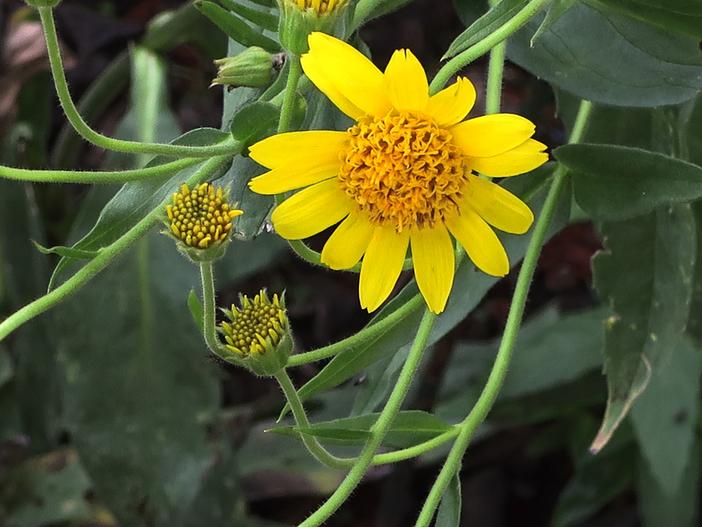Clasping Arnica
(Arnica lanceolata subsp. prima)
Clasping Arnica (Arnica lanceolata subsp. prima)
/
/

John Rusk
CC BY 2.0
Image By:
John Rusk
Recorded By:
Copyright:
CC BY 2.0
Copyright Notice:
Photo by: John Rusk | License Type: CC BY 2.0 | License URL: https://creativecommons.org/licenses/by/2.0 | Uploader: Josve05a | Publisher: Wikipedia Commons


Estimated Native Range
Summary
Arnica lanceolata subsp. prima, commonly known as Clasping Arnica, Seep-spring Arnica, Streambank Arnica, Stem-Clasping Arnica, or Lanceleaf Arnica, is a perennial herb that thrives in the moist, open meadows, seep springs, streambanks, and subalpine forests of Western North America. This herb typically grows at a moderate rate to a height of 1-2 feet (0.3-0.6 meters) and features lance-shaped leaves that clasp the stem. The bright yellow, daisy-like flowers are quite showy and bloom in the summer, attracting pollinators such as bees and butterflies.
Clasping Arnica is valued for its medicinal properties, particularly in homeopathic remedies for bruises and muscle aches. It is also appreciated for its ease of maintenance and the bright splash of color it provides in wildflower gardens, naturalized areas, and borders. While it prefers full sun to part shade, it is adaptable to a range of light conditions. It requires medium amounts of water and thrives in medium draining loam or clay soils. Gardeners should note that all parts of the plant are toxic if ingested and can cause skin irritation when handled.CC BY-SA 4.0
Clasping Arnica is valued for its medicinal properties, particularly in homeopathic remedies for bruises and muscle aches. It is also appreciated for its ease of maintenance and the bright splash of color it provides in wildflower gardens, naturalized areas, and borders. While it prefers full sun to part shade, it is adaptable to a range of light conditions. It requires medium amounts of water and thrives in medium draining loam or clay soils. Gardeners should note that all parts of the plant are toxic if ingested and can cause skin irritation when handled.CC BY-SA 4.0
Plant Description
- Plant Type: Herb
- Height: 1-2 feet
- Width: 0.5-1 feet
- Growth Rate: Moderate
- Flower Color: Yellow
- Flowering Season: Summer
- Leaf Retention: Deciduous
Growth Requirements
- Sun: Full Sun, Part Shade
- Water: Medium
- Drainage: Medium
Common Uses
Bee Garden, Butterfly Garden, Low Maintenance
Natural Habitat
Moist, open meadows, seep springs, streambanks, and subalpine forests
Other Names
Common Names: Seep-spring Arnica, Streambank Arnica, Stem-Clasping Arnica, Lanceleaf Arnica
Scientific Names: , Arnica lanceolata subsp. prima, Arnica amplexicaulis, Arnica amplexicaulis subsp. amplexicaulis, Arnica amplexicaulis subsp. genuina, Arnica amplexicaulis subsp. prima, Arnica amplexicaulis var. amplexicaulis, Arnica amplexicaulis var. piperi, Arnica amplexicaulis var. prima, Arnica amplexicaulis var. prima
GBIF Accepted Name: